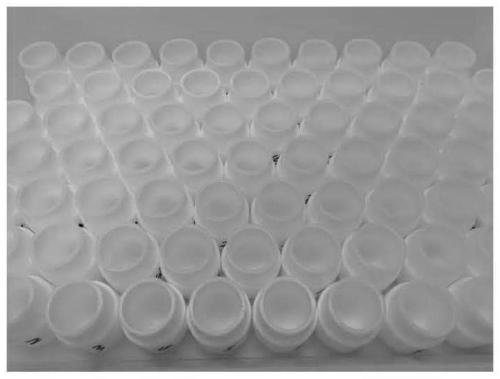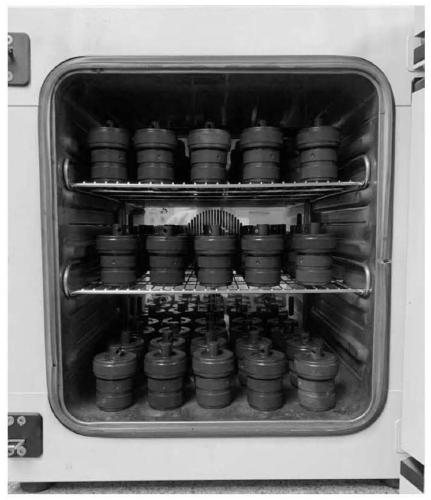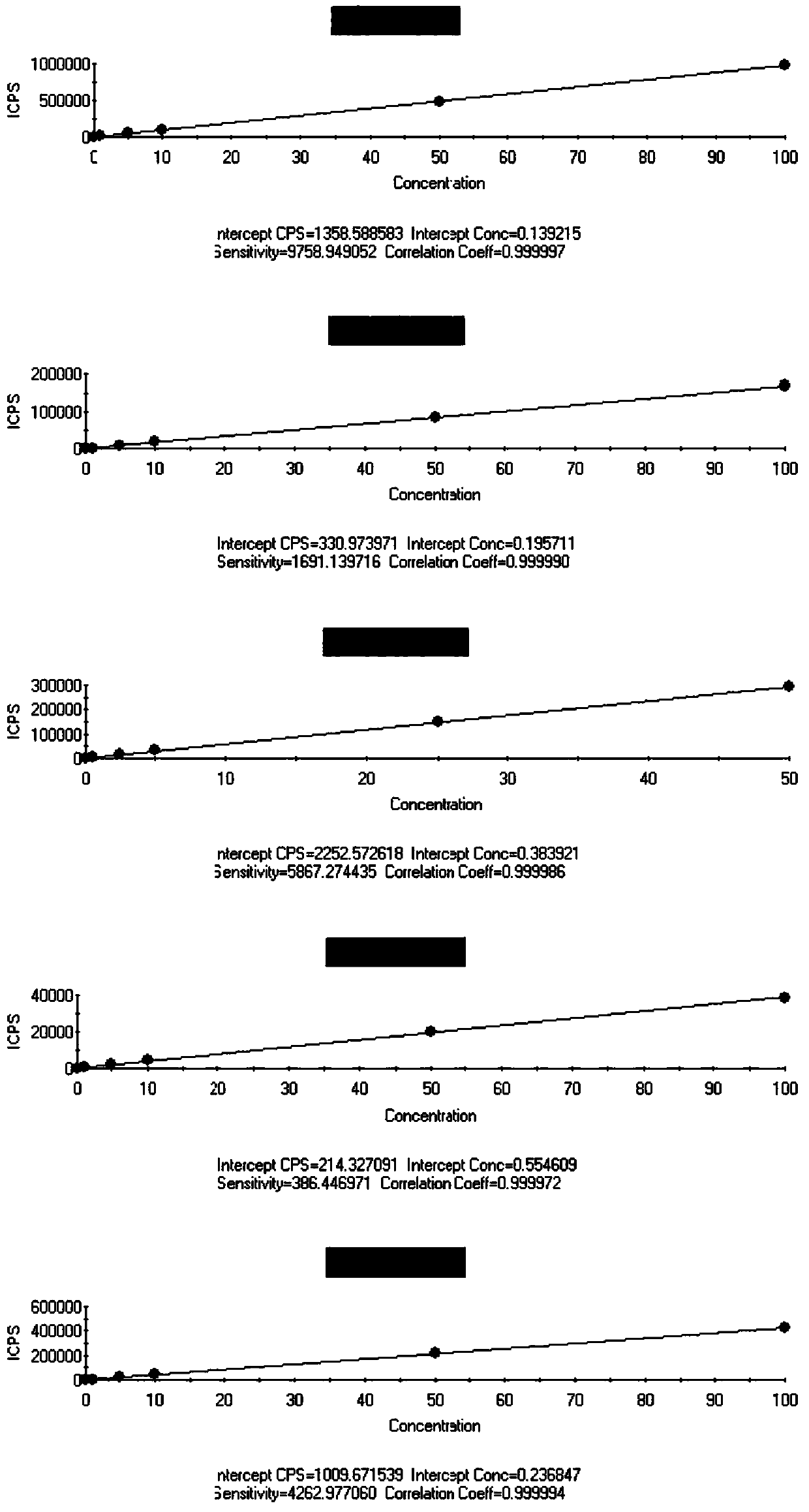Method for determining trace elements and rare earth elements in marine sediments and soil
A technology for medium and trace elements and marine sediments, applied in the field of chemical detection, can solve problems such as complex components, affecting accuracy, matrix interference, etc., and achieve the effects of low process blank value, improved accuracy, and complete digestion
- Summary
- Abstract
- Description
- Claims
- Application Information
AI Technical Summary
Problems solved by technology
Method used
Image
Examples
Embodiment 1
[0037] The invention provides a method for measuring 37 kinds of trace elements and rare earth elements in marine sediments and soils. The 23 kinds of trace elements are specifically: lithium, beryllium, cobalt, nickel, zirconium, cadmium, rubidium, cesium, hafnium, Molybdenum, niobium, tantalum, tungsten, bismuth, gallium, germanium, indium, thallium, lead, thorium, uranium, scandium, yttrium; 14 kinds of rare earth elements are: lanthanum, cerium, praseodymium, neodymium, samarium, europium, gadolinium, terbium , dysprosium, holmium, erbium, thulium, ytterbium, lutetium.
[0038] 1. Measuring range: The measuring range of trace elements and rare earth elements is 0.02μg / g-10000μg / g (mass fraction).
[0039] 2. Method principle
[0040] The sample is decomposed by double-distilled hydrofluoric acid and double-distilled nitric acid under high temperature and high pressure. The hydrofluoric acid is evaporated in an open system, and the salts are heated and dissolved with nitri...
PUM
 Login to View More
Login to View More Abstract
Description
Claims
Application Information
 Login to View More
Login to View More - R&D
- Intellectual Property
- Life Sciences
- Materials
- Tech Scout
- Unparalleled Data Quality
- Higher Quality Content
- 60% Fewer Hallucinations
Browse by: Latest US Patents, China's latest patents, Technical Efficacy Thesaurus, Application Domain, Technology Topic, Popular Technical Reports.
© 2025 PatSnap. All rights reserved.Legal|Privacy policy|Modern Slavery Act Transparency Statement|Sitemap|About US| Contact US: help@patsnap.com



